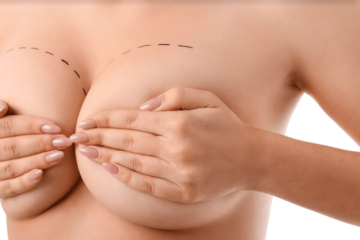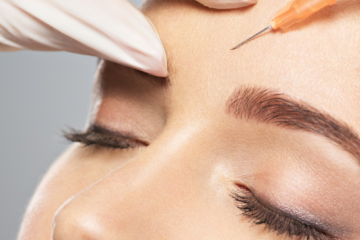Today, breast augmentation is one of the most commonly performed aesthetic operations. Breasts may either be undesirable in size due to pregnancy, breastfeeding, aging and incomplete development or can be small, underdeveloped, may have become smaller after birth. Breast augmentation is suitable for such patients.
Generally, breasts are not at their correct size due to pregnancy, breastfeeding or ageing, or due to incomplete development. Small breasts can be enlargened and made fuller with a breast augmentation operation. Aesthetically, they gain a more pleasant and beautiful appearance.
Breast volume is increased with silicone implants made from natural materials and which are inserted under breast tissue.
Reasons to Have a Breast Augmentation
This procedure is typically performed to enlarge breasts that are small, underdeveloped or have become smaller after giving birth.
- Body perception and lower self-confidence caused by small breasts
- Disproportinate relationship in the sizes of the waist and breasts.
- Shrinking, saggy and droopy breasts after childbirth.
- Shrinking and deformed breasts after yo-yo weight gain and loss.
- Asymmetrical breasts.
Things to Pay Attention to Pre-Surgery
A breast examinatioun must be given before the operation. The breast(s) should be assessed with ultrasonography and mammographies in situations where they may be higher risk and for patients of 40 years of age and above.
Age Range
Breast augmentation is recommended from 18 years of age onwards once breast development has finished. It can also be carried out on patients aged 50 and above as long as they are in good health. However, it is possible to perform the operation on patients under the age of 18 with their parents’ consent in cases where asymmetrical and problematic breasts cause the patient serious psychological distress.
Surgical Methods
Implants used to increase breast volume can be inserted in one of 4 different ways. Implants can be inserted via the nipple, the inframammary fold or the arm pit with 3-4cm long incisions or via the belly button.
The pocket prepared for the implant can either be under the breast tissue (subglandular pocket – above the muscle) or the the subpectoral pocket (beneath the muscle).
Breast Implant Shape
Breast implants are divided into 2 main groups, round and teardrop (anatomical). Teardrop implants more closely assume the shape of the breast and are fuller towards the nipple and bottom. These are preferred in cases where the is less breast tissue. These implants are manufactured in different widths, lengths and depths.
The structure of the patient’s breasts and rib cage, height, weight and body proportions are taken into account when determining the dimensions of the implant to be used to augment the breast. The patient and doctor together decide on the size and shape of the implant as long as the chosen implans do not exceed these physiological limits. During the operation, the plastic surgeon inserts a test implant to evaluate the appearance of the breast one last time. Occaisionally, the surgeon tries an implant that is a size larger or smaller than the planned implant’s size and uses the one that gives the best results.
Type of Anaesthetic and Length of Procedure
Operations are performed under general anaesthetic in a hospital environment. The length of the operation last between 1.5-3 hours depending on the operation’s technique and scope. A dressing is applied to the breasts at the end of the operation and a bra is used. This special bra doesn’t have an underwire is useful for managing swelling and pain. The patient will be able to stand a few hours after the operation. Staying overnight in the hospital would be very beneficial to closly monitor your sleeping position and any potential complications in addition to managing your pain.
Recovery Period
Post-operative pain can easily be managed with painkillers and this pain disappears within a day or two. Scarring fades over time, becoming faint 6 months – 1 year later.
Low-levels of swelling and colour changes disappear within a few days. The breasts will be larger than intended and tight for two weeks after the operation and they will soften and take their intended size over time. You can shower and begin working 3-5 days after the operation. The doctor will give you check-ups you should attend at specified periods (1, 3, 6 months etc). Bands or ointments that will help the healing process of the incisions can be used. The incision will completely heal, taking on its final complexion, after a year.
Things to Pay Attention to Post-Surgery
- You can go on walks but activities that put strain on the breast muscles (tennis, swimming etc) must be avoided for 6-8 weeks.
- Although patients can return to work within a few days, driving, lifiting heavy objects and lifting your arms upwards are not recommended for 1 and 3 weeks respectively.
- Sweating should be avoided for the first 15 days as this is the period when the incisions heal the most.
- The chest should not be exposed to direct sunlight for 4-6 weeks. The incision must be protected from the sun with sun cream with a SPF of 50 or with tape, otherwise the scar will have a darker complextion than your skin.
- Breat implants do not prevent breastfeeding.
- Before mamographies, you must tell the technician of your implants. The mammography will then be carried out in light of this fact. Breast implants are not at all affected by MRIs and other types of tomography.
- Silicone breast implants don’t have an expiry date. However, changes in size and positioning can be requested due to changes in life. If the size is to be change, a new implant must be used.
- Underwired bras must not be worn for at least 3 months.
- Temporary changes such as loss of sensation may be felt.





Tour Reviews
There are no reviews yet.
Leave a Review